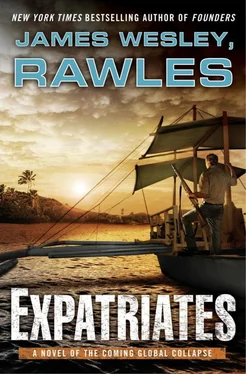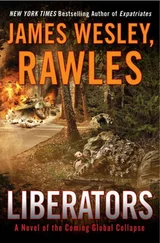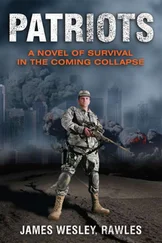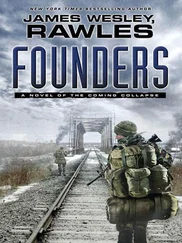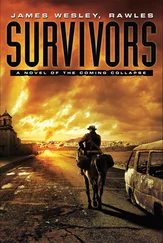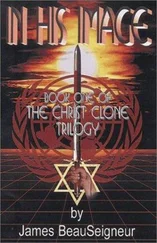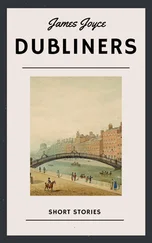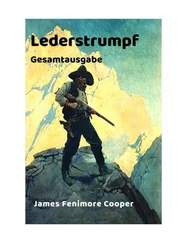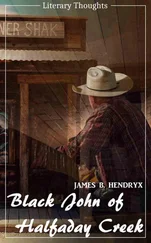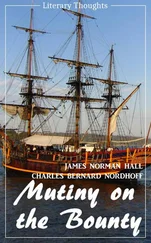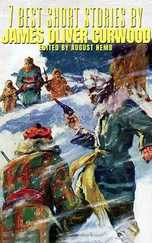Dolpo’s experience was mainly in small boats and onboard frigates. After hearing about their camouflage concern, he advised Tatang to use the U.S. Navy’s defunct Measure 21 camouflage paint scheme. He pulled a naval camouflage reference book from his bookshelf, and after a couple of minutes of searching through the pages, he turned to the page that showed Measure 21. “Here,” he said. “Have the paint store match these colors. That is the best camo coloring for being out on the blue water. It is a little too dark for inshore, but perpekto in deep water.” He then jotted down a note that read: “Navy Blue 5-N on all the vertical surfaces and Deck Blue 20-B on all the horizontal surfaces and canvas.”
• • •
Two days later, Peter learned that Tatang had traded his nets and floats for 150 rounds of .22 Long Rifle ammo, which had practically become a currency unto itself since the Crunch. The electric motor winch was traded for 20 rounds of .30-06.
The engine, he explained, burned about three quarts of diesel or coconut oil (“mantika”) per hour. The nearby Caltex station had long since sold out of all types and grades of fuel, but with some begging and pleading, a number of neighbors were willing to sell a total of eighty-five gallons of diesel.
In addition to the dino diesel, the Jeffords were able to buy coconut oil. Most of this was “Light Centrifuged Coconut Oil” in five-gallon plastic buckets labeled with maker names like NARDIAS, MPC, and CIIF Oil Mills.
They also managed to buy ten and a half gallons of corn-based cooking oil (made by the Bagiuo, Sun Valley, and Sunar companies), eight gallons of palm oil, six gallons of soybean oil, eleven bottles and cans of olive oil, and even a few bottles each of sunflower, peanut, and camellia oil. Realizing that this still wouldn’t be enough, they asked around and found twenty gallons of used deep-fryer oil available from a fried fish stand owner in Calbayog, as well as fifteen gallons of 10W40 motor oil, much of it in one-quart plastic bottles. It cost them more than 800 Philippine Pesos (PHP), but Tatang assured them that the various types of oil could mix with the diesel fuel, though no more than fifteen percent by volume. “We put in just a little bit of this fryer oil each time we refill the main tank,” he explained.
Before it was taken aboard, the used deep-fryer oil was carefully strained through three thicknesses of T-shirts, a slow process that removed all of the blackened particulate matter.
As he started the filtering process, Joseph asked his grandfather, “Do you want it to be stored in this can, or in this big plastic bottle?”
The old man answered in Tagalog, “ Pakilagay naman sa bote ang mantika ” (“Please put the oil in the bottle”). He added in English, “Mr. Jeffords says he want as many plastic containers as possible since metal ones are radar reflectors. We are stealthy boys.”
Jeffords recognized the Tagalog phrase. In the two years leading up to his first missionary trip, he had seriously studied the language. Ironically, his assignment turned out to be in the central Philippines, where Visayan and Waray were spoken much more frequently. Peter’s knowledge of Tagalog came in handy only around people like Navarro, who was originally from Luzon.
They indeed tried to buy and repackage as much of the oil as possible in plastic bottles. The few steel containers were stowed below the waterline. They agreed to use up all of the fuel in these metal containers first so they could discard the containers immediately after they had been emptied into the main tank, by sinking them. Given the wide variety of oil that they planned to burn and its dubious purity, they took the precaution of buying four spare fuel filters.
With both the U.S. dollar and the Philippine peso in free fall, nearly all of the various fuel and oil purchases were barter transactions. They started by bartering the gasoline they could siphon from the Jeffords’ car and what they had in cans. They were able to negotiate two gallons of diesel in trade for each gallon of gas, since gas was already more scarce, and because it was common knowledge that coconut oil could be substituted in diesel engine cars, trucks, or boats.
Tatang’s standard practice was to start the engine with “dino diesel” before switching to draw from the tank of coconut oil. Then, just before shutting down, he would switch back to the petroleum-based diesel tank.
The most disappointing transactions occurred when Tatang traded his truck for 110 gallons of coconut oil, and the Jeffords exchanged their Mitsubishi L300 Versa Van minivan for 130 gallons of coconut oil and 40 gallons of palm oil. The car was only three years old, but in the new post-Crunch economy, cars with gasoline engines were not highly valued. If the Mitsubishi had been a diesel, they might have been able to trade it for enough coconut oil for their entire trip. The rest of the fuel was bought with Philippine pesos of rapidly diminishing value and by bartering Rhiannon’s laptop and some silver pesos that Joseph had inherited from his maternal grandmother.
Their arsenal for the voyage consisted of Tatang’s well-worn but serviceable M1 Garand semiautomatic .30-06 rifle, Joseph’s takedown .22 rimfire Ruger 10/22 rifle, and Tatang’s 26.5 mm Geco flare pistol. The latter was designed just for signaling, but Tatang had a 12 gauge flare insert sleeve for the gun. Inside of this insert, he could use a second insert—a chamber adapter for .38 Special revolver cartridges. This made the flare gun into a crude single-shot pistol. Lacking both a rifled barrel and sights, the pistol could not be fired accurately beyond a few yards, but it was better than nothing.
Peter’s main concern was their most potent weapon, the M1 Garand. “Is it zeroed?” he asked Tatang.
“Oh, yeah, on a paper target it shoots right where you are aiming it at one hundred steps.”
Peter had once fired an uncle’s M1, but he didn’t know how to field-strip it or clean it. Tatang showed him how, though he had some difficulty in relating the rifle parts nomenclature in English.
Most of Tatang’s ammunition was black-tipped armor-piercing (AP) ammunition. It was all stored in 8-round en bloc clips. Tatang had only eleven loaded clips left—seven of AP, and four of plain “ball” full metal jacket ammunition. With such a small supply, they realized they would have to make each shot count.
With just one solid battle rifle in hand, Peter did not feel comfortably well armed for the voyage. When he mentioned this to Rhiannon, she retorted, “What did you want? A 20-millimeter deck gun? We have what we have, and we’ll be vigilant. The rest is up to God.”
“We have an unknown distance yet to run, an unknown river to explore. What falls there are, we know not; what rocks beset the channel, we know not; what walls ride over the river, we know not. Ah, well! we may conjecture many things.”
—John Wesley Powell
The ANU Campus, Canberra, Australia—October, the First Year
The campus was near chaos. Many students felt stranded by the economic turmoil. News outlets were exaggerating the scope of the crisis by focusing on the severe insulin shortage and deaths from ketoacidodis and diabetic comas. Australia had no domestic insulin manufacturing capability. Up until the late 1970s, Australia had been a major producer of animal-sourced insulin, but in recent years they had become entirely dependent on foreign supply.
Several hysterical students in Ava’s dormitory were sobbing. The ATMs were shut down. Many students lacked any transportation to get home. The major department stores like Coles and Woolworths were having huge runs on merchandise, and reports of looting were becoming more frequent. Imported goods were the most sought after since it had become obvious that foreign trade was shutting down. One young man in Ava’s dormitory was buying up as much cocoa powder and coffee as he could find.
Читать дальше
